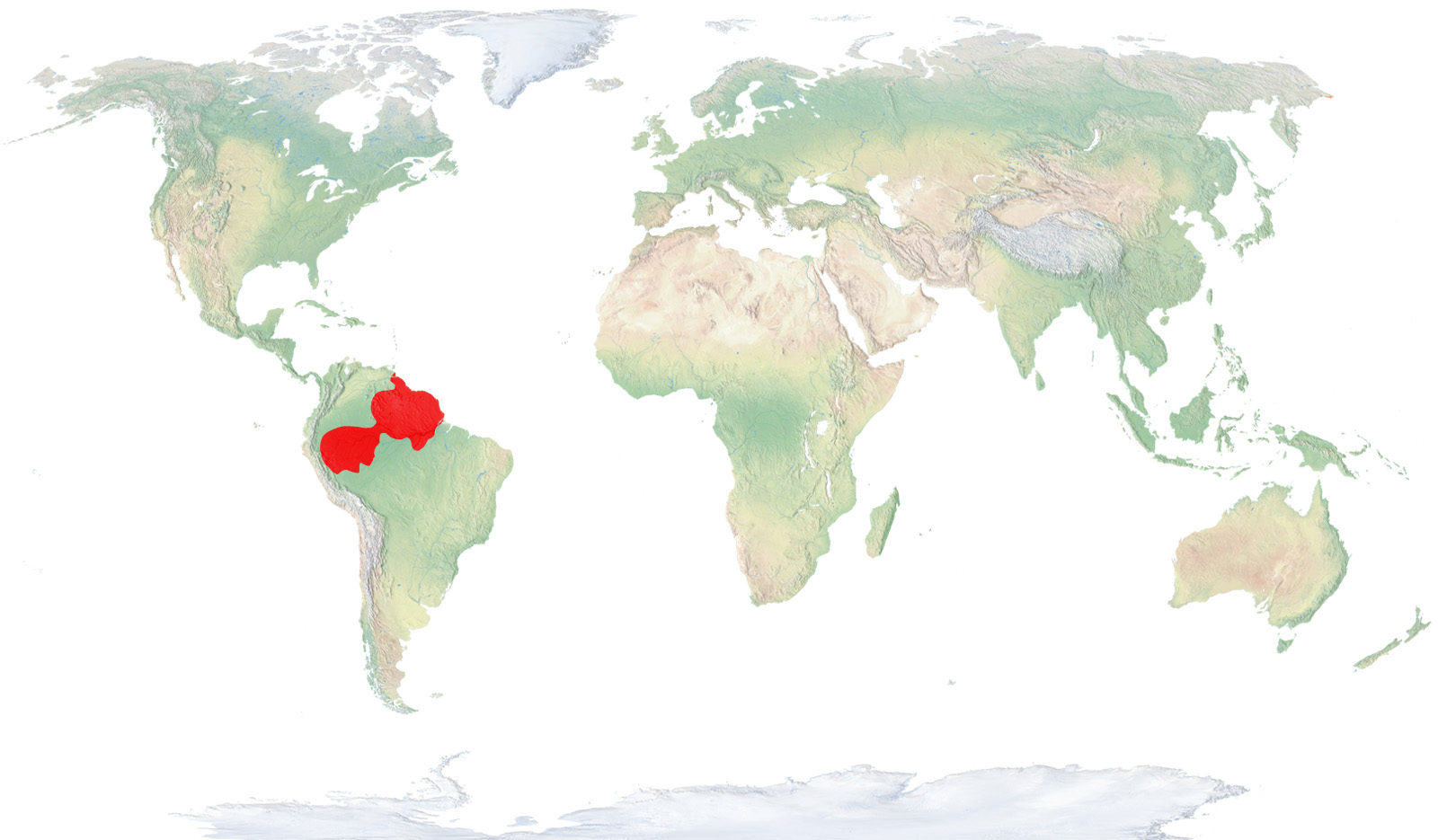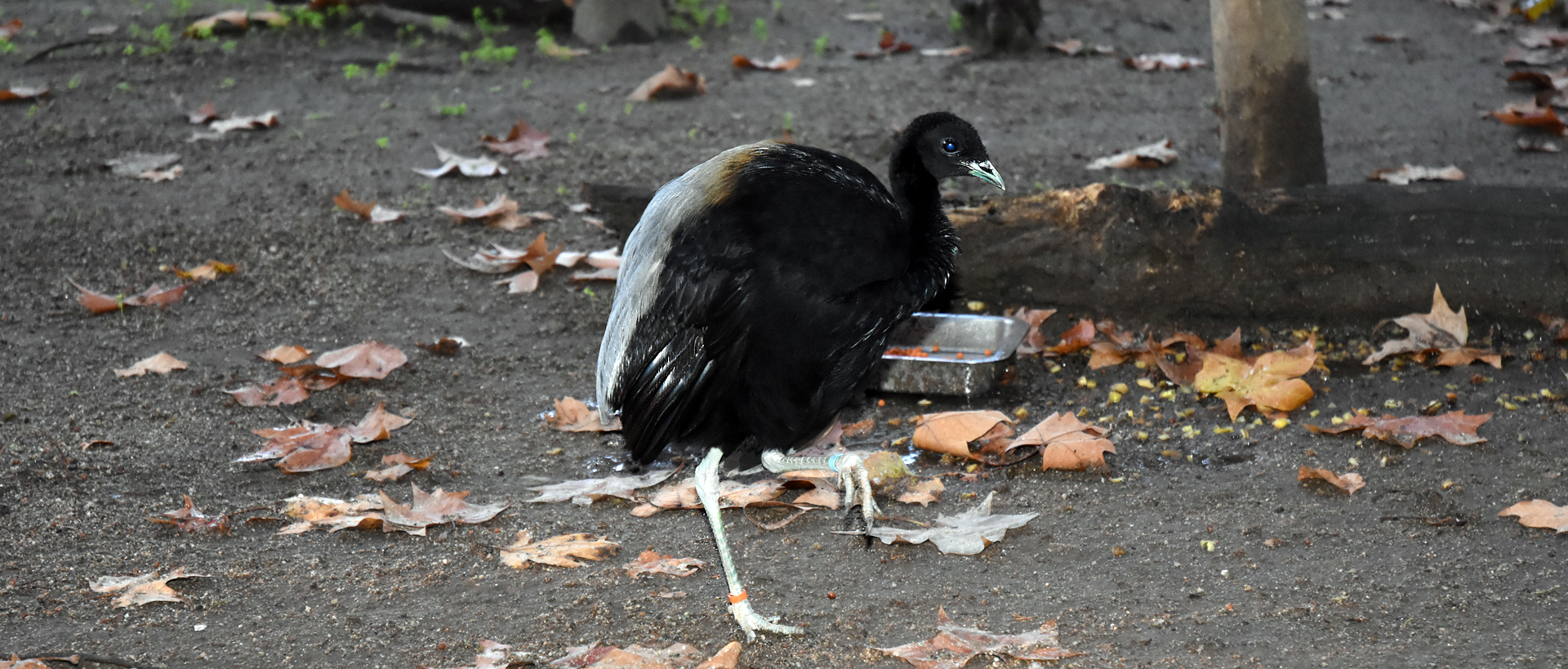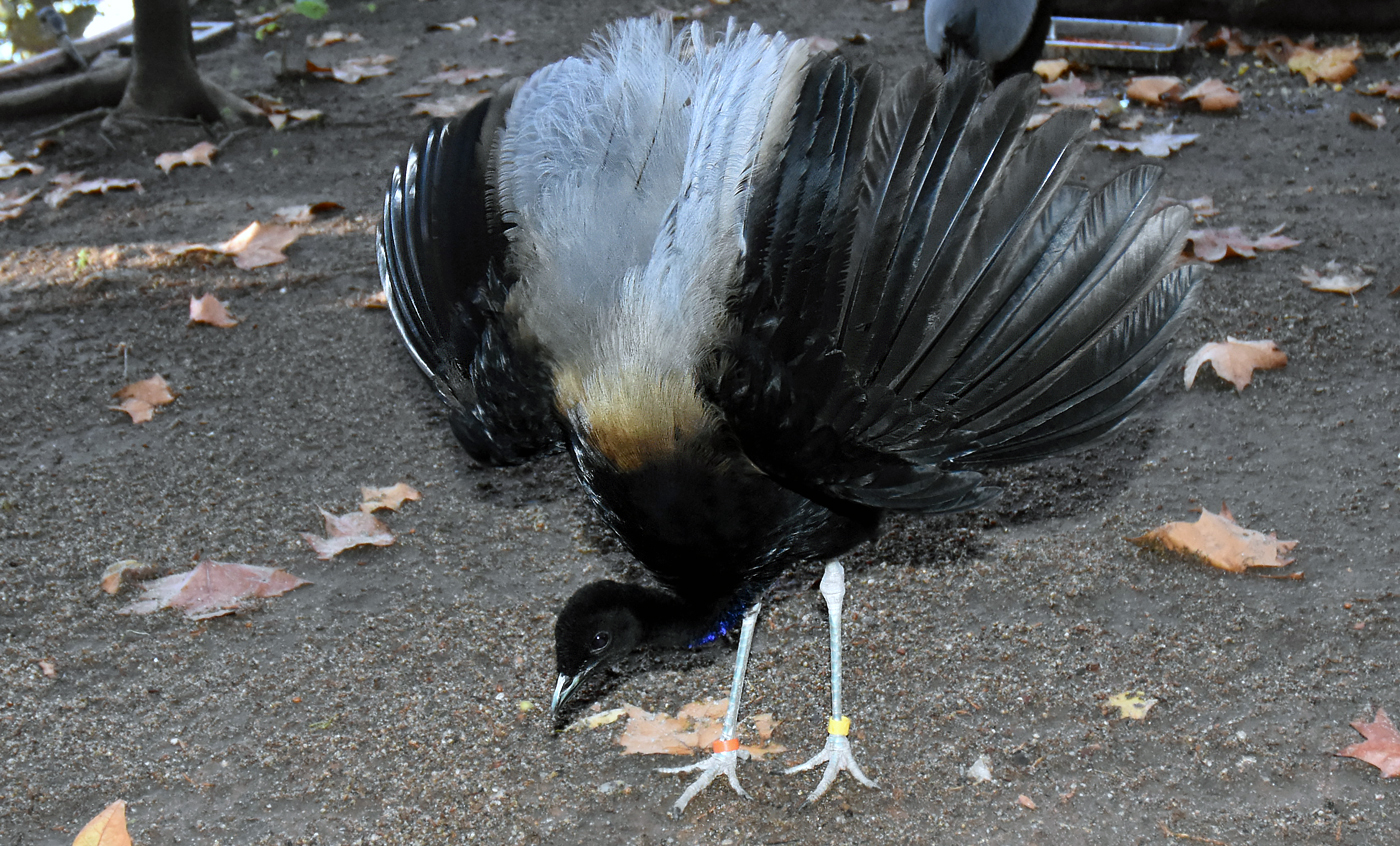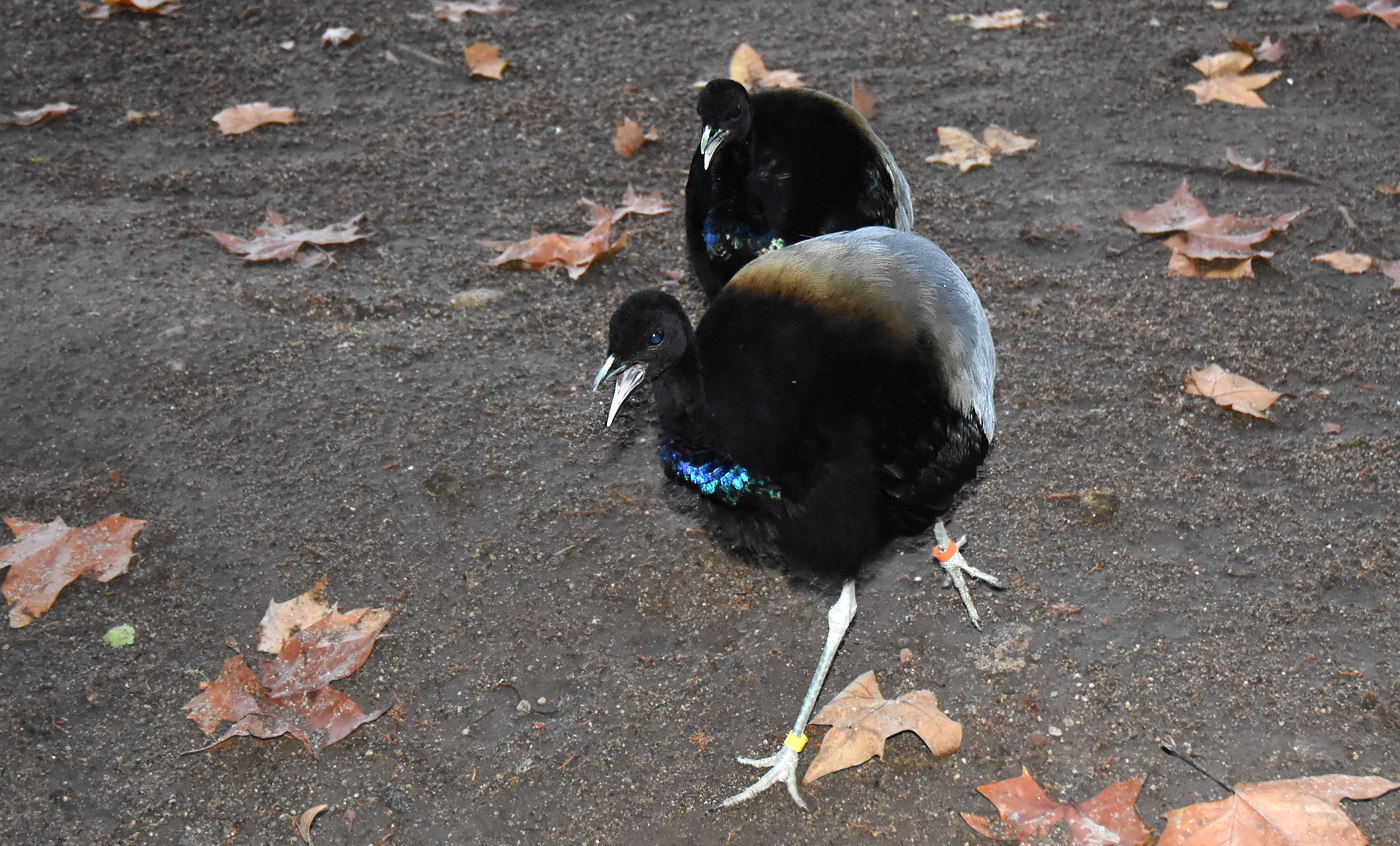Grey-winged trumpeter
The grey-winged trumpeter lives in groups of between 6 and 20 individuals that move about the humid tropical forests of the northern part of South America. It feeds on ripe fruit and small invertebrates and often follows groups of tree-dwelling animals, such as howler monkeys, to pick up the seeds and fruit that they drop.
Natural habit
Northern Brazil, Guaianes, Venezuela and south Colombia, Equador up to northern Peru

- Distribution / Resident
- Breeding
- Wintering
- Subspecies
Risk level
- Extint
- Extint in the wild
- Critically endangered
- In Danger
- Vulnerable
- Near threatened
- Minor concern
- Insufficient data
- Not evaluated
Taxonomy
Physical characteristics
Biology
Reproduction
Biology
This bird, from the crane family, can measure up to 45 cm long, a very interesting fact for an eminently forest-dwelling species that does not choose open areas for living. Its plumage is blackish on the dorsal and tertiary feathers, turning a light grey with a small cream area on the highest part of the back, still quite far from the nape. It has long light-coloured legs, a yellowish or light beak and a long thin neck, with rainbow hues on the belly, including greens and purples.
It mainly inhabits dense woods and tropical jungles from sea level to altitudes of 750 metres, in the north of Brazil, the Guianas and Surinam, southeast Venezuela and Colombia, eastern Ecuador and the north of Peru.
This bird is primarily frugivorous, although it can become more of an insectivore and even carnivorous depending on the season.
It breeds in cooperative groups, especially during the wet season, although there is some variability depending on temperatures and the particular microsystems of each region. It builds a nest in hollow trees, in the open air and with no roof, in which it lays two to four eggs, although three is most common, which both members of the pair incubate for 27 or 28 days (this cooperative behaviour for incubation is known for pairs in captivity, as it has not been confirmed in nature).
Sedentary and territorial throughout its area of distribution.
It is not endangered and is still widely distributed, although its territorial nature means that the density of pairs continues to be low. It suffers most in some countries due to furtive hunting and loss of habitat. In some areas and due to its ferocious nature and loud calls, it has been domesticated to use as security guards.






